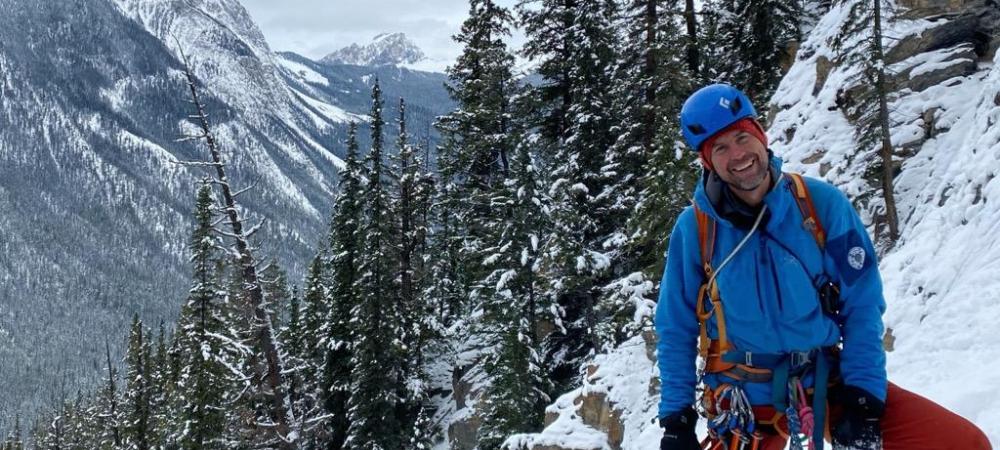
ACMG Mountain Conditions Summary for the Rockies and Columbia Mountains November 20, 2020
IN A NUTSHELL
The main avalanche problems are windslabs (to size 2) and a deeper Persistent Slab (to size 3 on the Nov 4/5 layer). Avalanche Hazard is Considerable (3 / 3 / 2) which means it's a tricky, dangerous time to be in the mountains.
The windslabs are big enough to be deadly, and we are right at the critical load point over the November 4 crust for big human triggered avalanches. Another 10+ cm of snow with mild below-freezing temperatures and little wind is in the forecast. I hope that the parks bulletins as well as reports coming in on the Mountain Information Network (MIN) of skier triggered avalanches will urge skiers to dial it back a bit and take it easy this weekend.
CONDITIONS
This past week has been mild and snowy with wind. This new snow is adding mass over top of the November 4 layer which some are calling "Biden Crust" and others the "Trump Persistent Weak Layer". Regardless of your biases this layer is a problem that's likely to be with us for a while yet!
This crust was formed by rain and warm weather earlier in the month and, as happens with these crusts, there are facets forming above and below it to make it an even weaker layer.
Right now in the interior (Selkirks) the storm snow has buried the Nov 4 crust down 50 to 100 cm. In the Rockies it's a similar situation, with depths divided roughly in half. The Nov 4 layer is down 30-60+ cm.
Skier triggered avalanches in the interior and the Rockies have been either in the windslabs or the deeper layers. The Nov 4 crust is still being triggered by skier traffic. There is also the risk of smaller storm and wind slab avalanches stepping down to the Nov 4 crust even where it is deeply buried making for some very large skier triggered avalanches.
HAZARDS
I think we've dealt with the avalanche hazard. Be careful out there.
The glaciers are getting covered pretty well for this time of the year and crevasses will be well hidden. But 100 to 150 cm of fresh autumn snow doesn't make for great bridges and there will be many places where a skier could punch through.
Cornices are getting large and tender, a result of the recent snowfall and wind. Getting hit by even a small cornice would be no fun, and there's also a risk of a cornice failure causing an unexpectedly large natural avalanche and hitting the lower runout zones.
WHAT TO DO
Judging by today's ski conditions and the forecast there should be plenty of good turns to be had across the Rockies and the Interior over the next few days. Finding deep snow will be key. Below treeline it's still pretty rugged. Stick to lower angled, supported terrain and be cautious of terrain traps and the runouts of larger avalanches overhead in the event of a big natural avalanche.
Ice climbing is in good early season shape now in the Rockies. I would be cautious and avoid routes with overhead hazard and think carefully before crossing above cliffs. Loose snow avalanches and large sluffing will also be a concern for ice climbers this weekend.
This is it for MCR Summaries for 2020. What a crazy year. Stay safe and keep your fingers crossed for things improving in 2021. Avalanche Canada will start publishing bulletins on November 25, just a few days away.
POST TO THE MIN
I want to encourage all of you this winter to please take a moment after every ski trip to make a post, however brief, to the excellent Mountain Information Network (MIN) at www.avalanche.ca. It is quick to get setup and it's really easy to figure out.
With the slowdown in the ski guiding industry due to covid, this year more than ever Avalanche Canada needs all of the data it can get to create its bulletins. Whether you get caught in an avalanche or just experienced that best powder skiing of your life, the MIN and Avalanche Canada will benefit from your observations -- which means we will ALL benefit.
See you in the spring!
Tom Wolfe
ACMG Mountain Guide
Photo courtesty of Nino Guagliano. Me on Guinness Gully / High Test this past Monday. Both are in great early season condition.